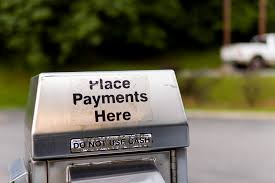The revised Payment Services Directive ( PSD2 ) was adopted by the European parliament in the final quarter of last year. Yet many retailers remain unclear about what it actually means for them or for their businesses. Let’s take a look at what changes it will make, why they’re important and how developing strong API’s will be key to implementing this new directive.
Background
The idea of the original Payments Services Directive (PSD), introduced in 2007, was to create a single European market for payment services. The intention was to simplify payment processing across the EU and to encourage competition in the payments sector by opening it up to new entrants.
With PSD2 this has been expanded to improve payment efficiency; offer improved consumer protection; provide greater clarity on new payment methods such as mobile; and to promote innovation.
Why it matters
So what’s the big deal? PSD2 will mean a great deal of investment and the banks are not entirely happy with it because it threatens to open up a space which they’ve previously seen as their own.
In the past, when consumers have made online purchases, the payment has typically been processed via an intermediary, such as PayPal, which obtains the funds from the consumer’s bank account or nominated credit card. Under PSD2, consumers will be able to give retailers permission to access money directly, with no intermediary.
This connection will be achieved using APIs (Application Programming Interfaces) which will allow companies to connect directly to the financial institutions. This will make life easier for retailers when customers have more than one bank account. Instead of having to access details separately, they will have access to all details in a single portal.
Of course this also raises some issues surrounding who has access to an individual’s payment and purchase history. This is valuable information for both retailers and payment services, not to mention its attraction for cyber criminals.
In order to safeguard the system, there will be strong consumer authentication and an unconditional right to a refund should something go wrong. It will also benefit the consumer through a ban on imposing surcharges for card payments. To help guard against fraud, liability for any unauthorised payments will be capped at 50 euros. The system will also provide improved protection for payments made outside the EU and in non-EU currencies.
What happens next?
Now that the proposals have been finalised by the European Parliament, EU member states will need to vote to endorse the directive. Once this is done, and assuming a positive outcome, member states have up to two years to incorporate PSD2 into their national laws.
There is little doubt that this will lead to a shake up in the payments sector. There will be new market entrants, who will work with API Developers like W3Partnership to create and manage APIs within the new framework, to take on existing payment providers. For both retailers and customers, this will mean greater choice and competition.
How successful they are will very much depend upon how well they can show that they can be trusted to reliably take payments from bank accounts. They will need to earn consumer trust as well as meeting the regulatory demands of PSD2.




